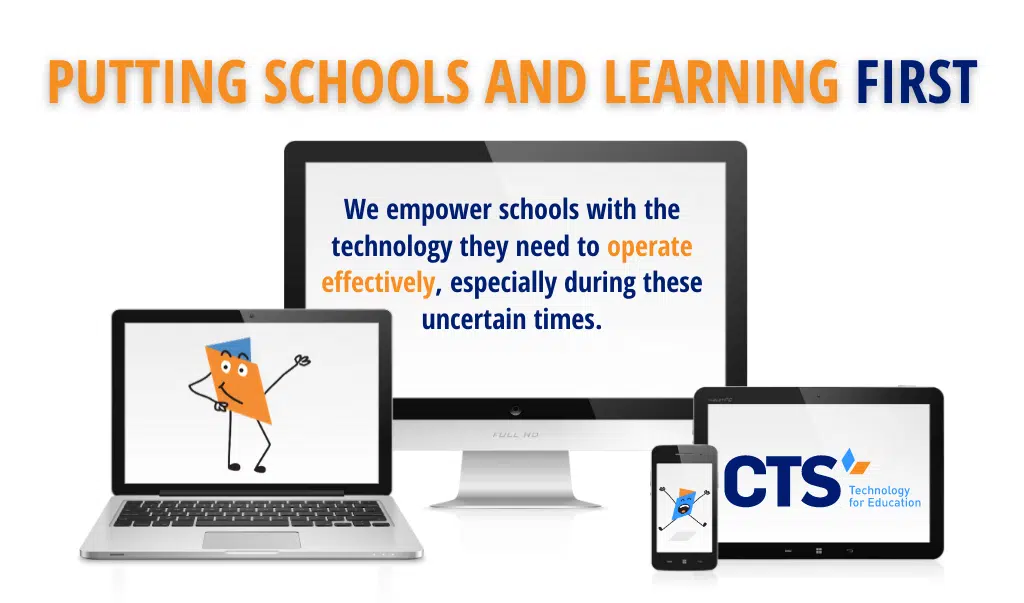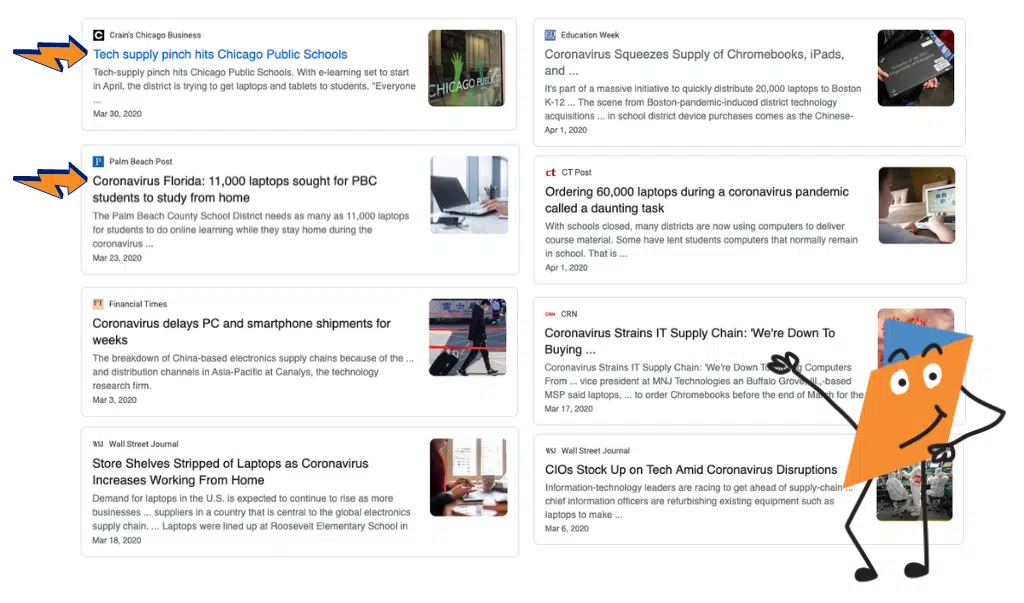It was the start of school closings for COVID-19 (March 2020), and a LOT of schools were caught off guard. Suddenly, they needed technology to support remote learning at the same time every other school did. What’s more, they needed it FAST. Without continuity, the learning momentum of students would be lost, and the educational mission of schools would be at risk.
One such school reached out to CTS with an immediate need for laptops for their students, so they could continue the school year with a remote learning program. When we tackled that need, there was another school and another . . .
The Problem: For maximum efficiency, schools often repurpose laptops from technology carts, for the simple reason that not all devices are used at the same time. That works extremely well in an in-person setting, but now students were distancing—working remotely throughout the day from individual residences—meaning the goal would be a laptop for every student.
Hurdles
Challenges: Again, for efficiency, educators often favor Chromebooks, which can deliver the most bang for the price. So the demand wasn’t just for ANY laptop, but to populate a technical ecosystem with quality components that permit everyone to be on the same virtual page. And LOTS of schools had the same or similar ideas at once. As with masks, paper towels, bleach, and basic staples, distributors had run out due to unprecedented demand. On top of that, even manufacturers who had the flexibility to increase production were having serious supply chain issues. Shipping was stalled. Boatloads of Chromebooks might be out there, but getting them into the hands of learners quickly could be a Herculean effort. The stakes were high, the need imminent, and the solution had to be fast and right.
The Moment: When it rains, it pours. At exactly the moment when COVID-19 struck, it was a ‘cutover’—meaning manufacturers were phasing out last year’s models for new ones. That meant not only additional inventory challenges but also the need to vet new models to ensure a sustainable configuration. CTS and the school had a strong preference for next-generation processors to ensure the school’s technology continued to serve regardless of what was ahead or how long it would last.
Baking-in Sustainability: We weren’t just solving device procurement for one school, though every school has unique needs. We needed a sustainable solution for any school (several have asked us to adapt the same general template to their particular conditions). So each client manager connected on a per school, per order basis. The process required collaborating with the school for its specific requirements, identifying the vendor, establishing the relationship, divide selection, configuration, and logistics to put devices in the hands of learners, instructors, and school staff.
Pivot
What We Did: The CTS Team sprang into action. Director of Client Management, Mike McKee, had met with a possible vendor several months before that might have access to the technology. They were a contact from an IT conference but, as yet, untested. Ritaly Rapaport (CTO), Chris Hewett (Director of Finance & Operations), and Mark Beisner (Operations & Finance Analyst) planned the vendor outreach, and Hewett initiated the discussion with McKee’s contact—validating what looked like an opportunity. They could indeed fulfill on a range of devices—IF we acted quickly. Steve Mantulenko, our Lead Engineer, jumped in, vetting models and comparing options. Meanwhile, the CTS client managers worked to determine the precise need (number and types of devices that would be required). Mark Beisner negotiated the deal, locking in excellent pricing (less than with other vendors who couldn’t meet the need). And . . . because we put the right people into the process at the right moment, the approach worked. The vendor was delighted because, beyond the simple fact of a sale, they were achieving a strong partnership with CTS and its ecosystem of IT, support, and technology for education . . .
Half the Battle: The hardware is only one ingredient in device procurement. You can’t just ship laptops to students’ homes with a fresh operating system ready to be configured, because there’s not an IT team in each household. We needed to put EACH device on the standard naming configuration for the school, record the serial number of each device for inventory control. And there might be security platform configurations in addition to the inherent security in a Chromebook. CTS put Senior Project Manager Derek Diaz in charge of project implementation, and the client managers created a process in conjunction with the vendor to configure the laptops prior to shipping.
Results
Immediate Results: With a turnaround time of only 4-5 weeks, CTS had laptops delivered to individual students (itself a significant logistics challenge) so parents wouldn’t have to pick up devices at a central location, like the school. CTS deployed five client managers, delivered 1500 Chromebook in a two month period, across 15 schools and 1500 students. By careful planning and watchful execution, we did it without the misfires that can plague complex projects with an IT company that doesn’t ‘get it’ when it comes to the unique needs of technology for educational purposes. No massive flood of service tickets full of surprise and confusion . . . the teachers and students opened their laptops, and the technology just worked.
The New Reality: Mark Beisner said, “This is a win for everyone involved because we empowered teachers with the tools they need to effectively pivot more quickly, reach students more effectively and faster.” Device procurement is part of the larger thing CTS does: our goal is to empower schools with the end-to-end technology solutions they need to operate effectively. CTS does what we do so schools can be effective at what THEY do, which is shape and change students’ lives.
Looking for best-in-class device procurement for your school that factors educational purpose with pricing, sustainability, and speed? Tell CTS what you need.






